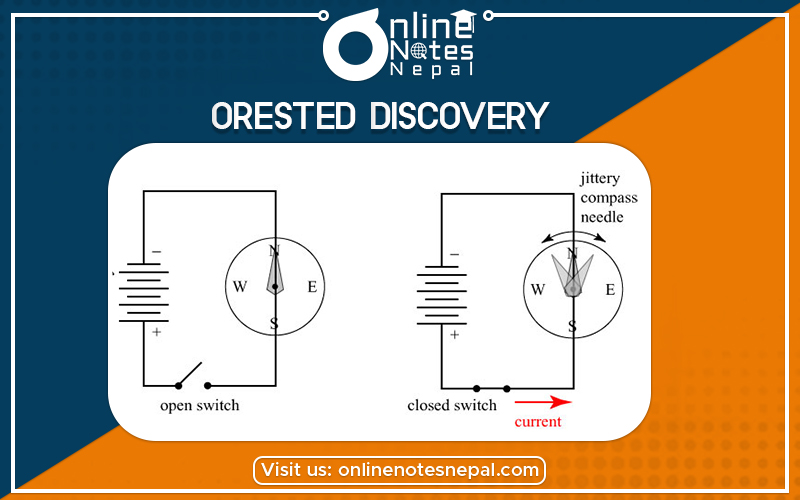Published by: Zaya
Published date: 26 Jun 2021

The Danish scientist Orested established a relation between electric and magnetic fields. In his experiment when he placed the current-carrying conductor parallel to the compass needle it was interestingly found that there was a deflection of the magnetic needle. When the direction of the current was reversed then the deflection of a compass needle was in the opposite direction.
From his experiment, he concluded that there is a relation between the magnetic field and the electric field.
Orested-Discovery
In fig(i) there is no deflection of compass needle due to the absence of current. In fig(ii) there is the deflection of the compass needle due to the current on the conductor. In fig(iii) the is the deflection of the compass needle in the opposite direction in reversing the direction of the current.
The direction of the magnetic field and current:
There are different rules to determine the direction of the magnetic field and current.
Right-hand thumb rule
This rule is used to determine the direction of the magnetic field due to the straight current-carrying conductor. According to this rule, if the thumb of the right hand represents the direction of the straight current-carrying conductor then tips of the curve figures represent the direction of the magnetic field.
Maxwell’s Croke screw rule (Right-hand screw rule):
This rule is also used to determine the direction of the magnetic field due to the current-carrying conductor. According to this rule, when the screw is rotated in the right-hand side the forward motion of the screw represents the direction of the current-carrying conductor and the circular motion of the screw represents the direction of a magnetic field.
Right-hand fist rule:
This rule is used to determine the direction of the magnetic field due to a circular current-carrying coil. According to this rule, if the tips of the curved figures represent the direction of current on the circular coil then the thumb of the right hand represents the direction of the magnetic field.
Fleming’s left-hand rule:
This rule is used to determine the direction of the magnetic field, the motion of charged particles on the magnetic field, and the force exerted on the magnetic field. According to this rule, if the thumb, fore, and middle finger of the left hand are mutually perpendicular to each other then the middle figure represent the direction of motion of charged particles on the magnetic field, the forefinger represents the direction of a magnetic field and the thumb finger represents the direction of magnetic force.